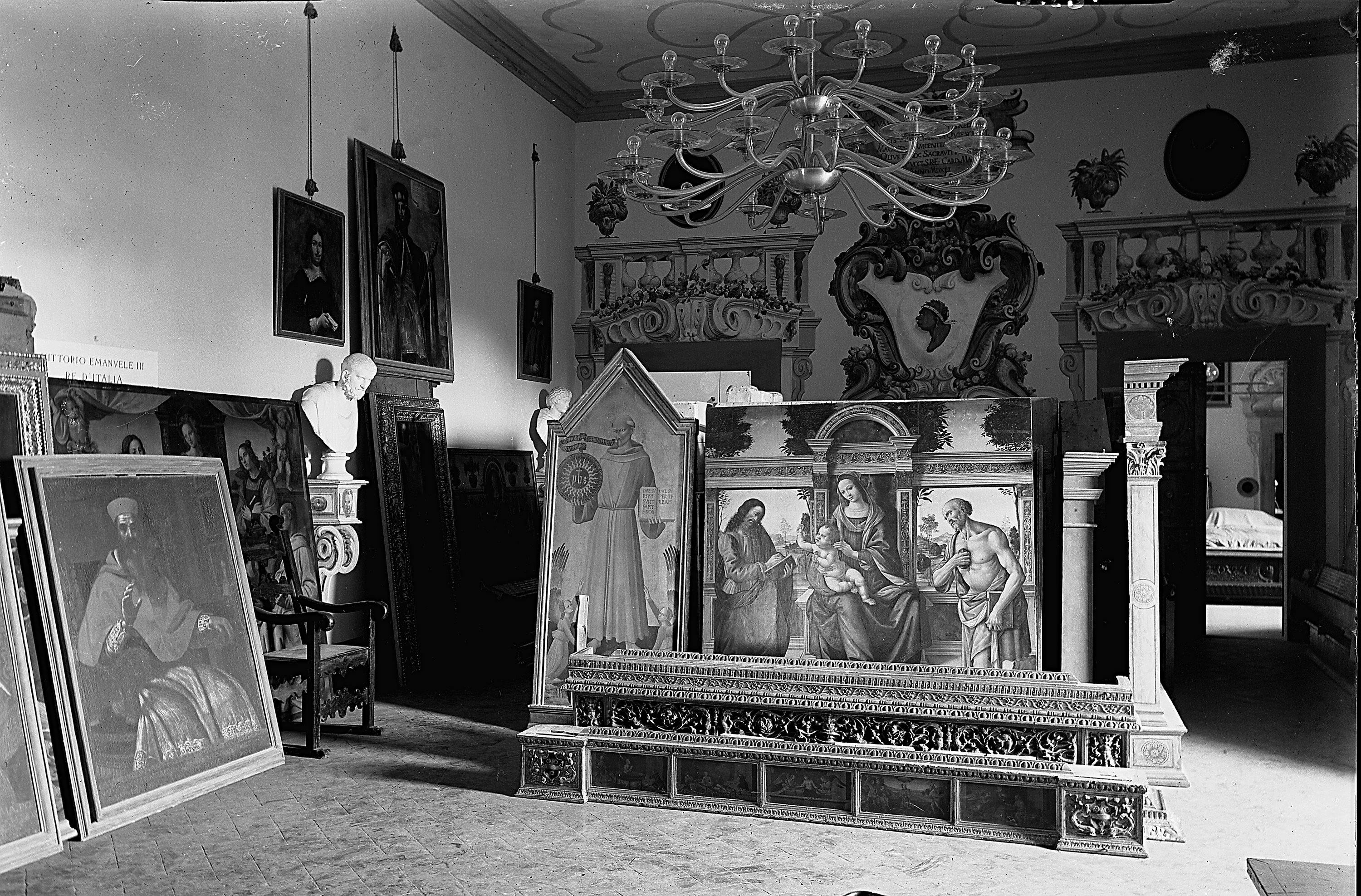Documentation of World War II damage to the Florentine artistic heritage
The Uffizi Photographic Department has been reflecting the vicissitudes of the museums and the city of Florence for about a century, and since the outbreak of the Second World War, it has collected a large number of photographs documenting the life of the cultural heritage before, during, and after the frontline moved through the city.
On film or plate, images captured by the staff of the Photographic Department, by officials on duty at the time, by private photographers, or by Allied troops at the time of the Liberation are preserved.
The documentation up to 1944 is on glass plates measuring 21x27 or 13x18 cm; that of 1945 is on 10x12 or 13x18 cm plates. Photographs are also preserved on Leica film, a 35 mm camera, which was lightweight and allowed shooting freehand. It is, therefore, not homogeneous material, but a total of about 1,500 shots that originally amounted to about 5,000: a large part of the images on Leica film was lost during the disastrous flood of 1966; only test prints of many have been preserved.
At least three blocks connected with the events of the war in Florence can be recognised: the first nucleus is dedicated to the documentation of the protection of the movable and immovable cultural heritage; the second nucleus bears witness to the destruction caused by the advance of the front, that is, the demolition of the bridges over the Arno river and the buildings around Ponte Vecchio by the Nazi troops, as well as the destruction of some neighbourhoods around the historic centre due to Allied bombing; the third nucleus finally bears witness to the post-war reconstruction work.
The chief photographer during these years was Nicolò Cipriani.
A selection from each of these three nuclei helps to understand the high documentary value of the entire collection, which was desired and preserved from the very first shots by the then superintendent Giovanni Poggi, who firmly refused to sacrifice negatives from the Photographic Department, requested during the war by the institutions in order to reuse them due to the shortage of raw materials. The plates were in fact inventoried, and Poggi considered it important to preserve them as "real documents for the works of art" and already an asset of the Uffizi.
A separate section of the documentation is represented by the photographs taken by Nello Baroni in the days of the summer of 1944 when the Nazi army blew up the bridges of Florence and more than five thousand Florentines were forced to abandon their homes, finding refuge inside Palazzo Pitti. The Uffizi Photographic Cabinet conserves a significant part of the approximately eighty photographs taken by Nello Baroni, to which the virtual exhibition ‘29 July - 4 August 1944. The Pitti Republic’.
P. Bargellini, La splendida storia di Firenze. Dal diluvio del 1870 al diluvio del 1966, Firenze 1969; E. Detti, Firenze scomparsa, Firenze 1970; Firenze 1944-1945: Danni di guerra, a cura di M. Tamassia, Livorno 2007
